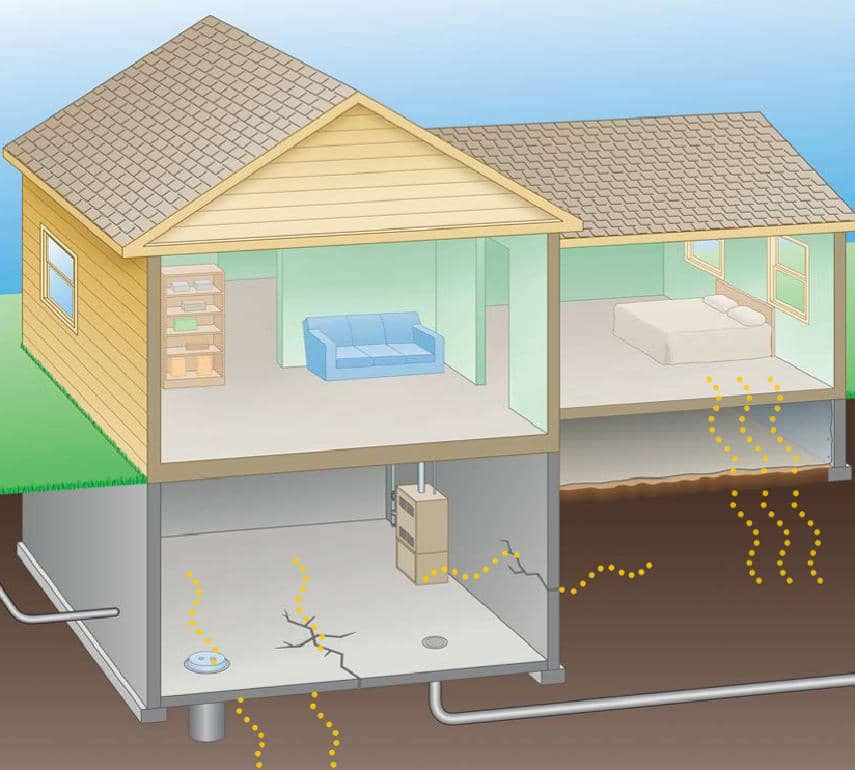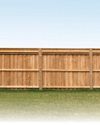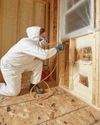Radon is a colorless, odorless radioactive gas that’s produced by decaying uranium. Radon is present in nearly all soils, and very low levels of radon gas are found in the air we breathe every day. Long-term exposure to high levels of radon trapped in your home can cause lung cancer.

How does radon gas enter a home?
Radon gas moves from the soil into a home. Although small amounts of radon can seep directly through pores in concrete, the major entry points are cracks in basement floors, sump baskets and the perimeter of slabs. Any house, of any age, can have elevated radon levels. It really depends on the way your specific house interacts with the surrounding soil. Your neighbor’s radon level may differ significantly from yours.
How do I test for radon?
Start with a short-term test for a quick assessment to see if further testing is warranted. Most are activated charcoal–based and measure radon levels for two to seven days. Mail the tests to a lab for the results. Short-term tests are available at home centers, hardware stores and online retailers for $10 to $40. If your reading is above 4 picocuries per liter (pCi/L), do a second test.
Bu hikaye Family Handyman dergisinin June 2019 sayısından alınmıştır.
Start your 7-day Magzter GOLD free trial to access thousands of curated premium stories, and 8,500+ magazines and newspapers.
Already a subscriber ? Giriş Yap
Bu hikaye Family Handyman dergisinin June 2019 sayısından alınmıştır.
Start your 7-day Magzter GOLD free trial to access thousands of curated premium stories, and 8,500+ magazines and newspapers.
Already a subscriber? Giriş Yap

7 Bicycle Maintenance Tips
Keep your bike in tiptop shape and ride safe!

SETTING FENCE POSTS WITH EXPANDING FOAM
Any fence builder knows you need strong posts for a strong fence, and that means backfilling the postholes with a dense, hard material other than dirt.

PEBBLE MOSAIC STEPPING STONES
COLLECT SOME RIVER ROCK AND MAKE YOUR OWN UNIQUE STEPPINGSTONE PATH

EARTH-FRIENDLY WEED KILLERS
HEALTHIER CHOICES FOR HUMANS AND THE ENVIRONMENT

DIY! HYDROPONIC GARDEN
FRESH VEGETABLES AT YOUR FINGERTIPS

GROW MINI VEGETABLES
GROW A GARDEN IN A TINY SPACE!

BUILD A VERTICAL GARDEN
TIME TO GROW UP!

MODERN WATER FOUNTAINS
A SPLASH OF PEACE FOR YOUR PATIO

9 ALTERNATIVE USES FOR SAWDUST
Every fully stocked wood shop has a table saw. You can usually find a pile of sawdust under it, even if it's used only occasionally. If a shop has a belt sander or band saw, there's probably another pile of finer sawdust under that. Even people without stationary tools have sawdust accumulation on their workbenches.

INSULATE WITH FOAM
IT'S A GREAT ALTERNATIVE TO FIBERGLASS